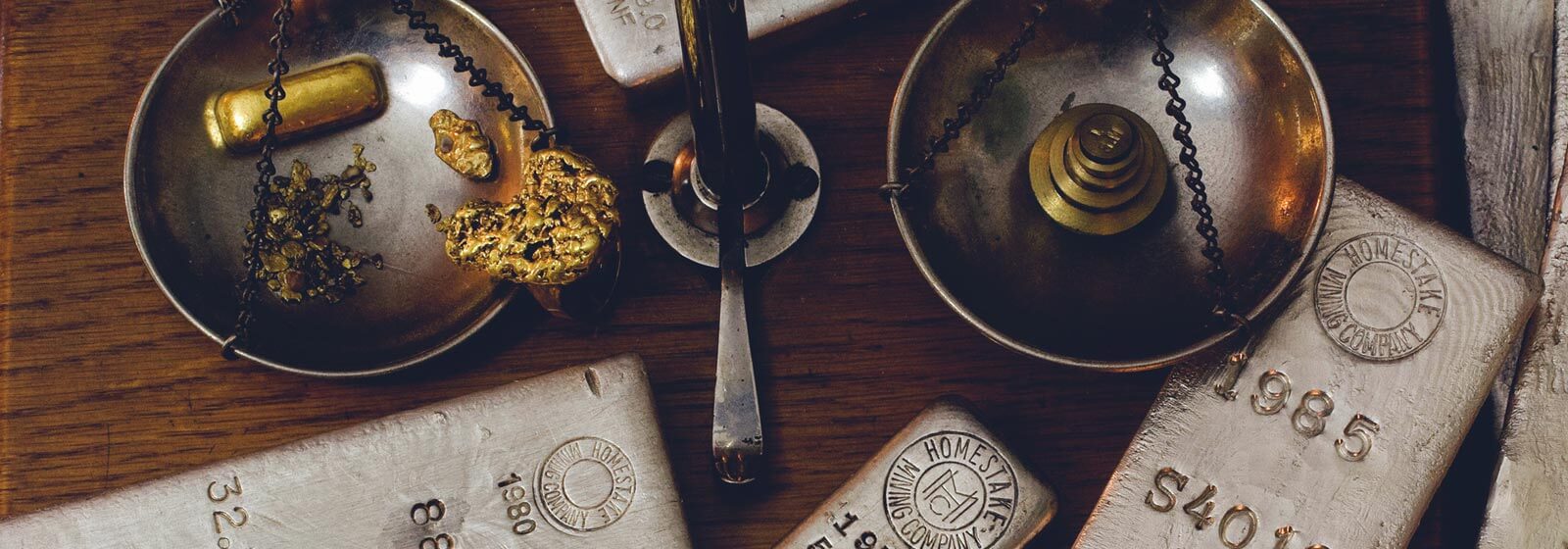The value of gold and silver bullion has generally risen and fallen in relative tandem over time; where gold goes, silver follows. For those who monitor the gold and silver markets, this can feel satisfying, because it makes roughly gauging the relative value of each fairly simple. However, on further inspection, it can be confusing once you begin to understand their different uses in the wider market.
To really get clarity on the relative value of gold bullion against silver bullion, we need to look into the question of what is the gold / silver ratio? How it has arisen and its behaviour tells us more about how to understand pricing.
Essentially, the ratio is a calculation employed by investors to assess the best time to invest. The ratio reflects the weight of silver it takes to purchase one ounce of gold. The calculation for it involves taking the market price of gold, then dividing this by the price of silver. If the current gold price is relatively high, it means it will take more silver to buy an ounce of gold, but this has not always been so.
Historically, silver was under-valued by the Spanish two centuries ago, according to some industry commentators, in order to maintain their power on the world stage. Some argue this has left a legacy from which silver has since been catching up.
For most of the nineteenth century, silver bars were valued at around 14-16 times that of purchasing gold bullion - a low ratio. During the twentieth century, volatility began to enter the markets. In 1938, against the outbreak of war, the gold silver ratio hit its peak for the 20th century at a 98:1 ratio, only to slide back dramatically in the decade following. Since 1978, around the time of the dollar being unpegged from ‘the gold standard’, the ratio has oscillated quite dramatically, rising steadily in the 1980s, then becoming somewhat unpredictable since, rising and falling between around 40:1 to as high as 80:1. This variation reflects a variety of issues at play, not least the re-evaluation of silver as a commodity in relation to gold.
Nowadays, we cannot survive without silver, given that much of our technology would be redundant without it. Silver is a highly versatile metal and industrial demand is increasingly contributing to its scarcity. Therefore, it is not surprising that we see the gold silver ratio vacillating dramatically, as the variables considered in silver’s valuation shift in significance over time. Furthermore, a combination of inflation fears, currency devaluation, uncertainty in traditional investments and fears of world debt has made silver bars and related assets attractive as an investment for people interested in precious metals as a source of future security.
What is the Gold & Silver Ratio Likely to do in the Future?
According to Goldcorp Inc., one of the world’s largest producers of gold, there is one gram of silver for every 12.5 metric tons of earth, versus one gram of gold for every 250 metric tons. Assuming this is correct, together with other factors at play in the world, one might expect that the real ratio of gold to silver could be closer to the historical average, perhaps around 20:1.
Whilst we see silver prices moving up and down with economic events happening around the world, some of this volatility is also due to it not being bought and sold as much as gold bullion. It is perceived to be of less value, so the market is significantly smaller, making any sudden changes in circumstances have even more impact.
Nevertheless, when uncertainty hits the world economy, gold and silver bullion are both perceived as offering greater security. In recent years, demand for silver has outstripped supply, interestingly by as much as 103 million ounces in 2013, the third year in a row there was just not enough silver available to satisfy buyers.
Increasingly, silver is playing an important role in the internet and emerging trends. For instance, sports technology companies have developed wearable technology and smartphone apps to track physical activities such as your heart rate, any calories ingested / burnt off, plus other biometric feedback tools to monitor our well-being whilst we are on the go. This industry alone has created greater demand for this precious metal, aside from traditional industry demand potentially increasing alongside emerging economies.
Whilst the gold silver ratio seems high now, prices of silver bars and coins could increase considerably in the future, given changing perceptions and increasing demand impacting this ratio.





